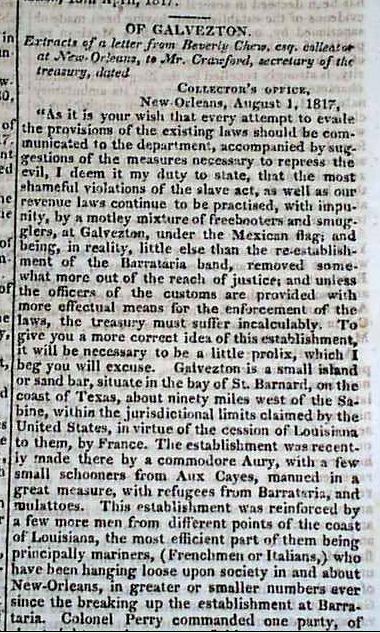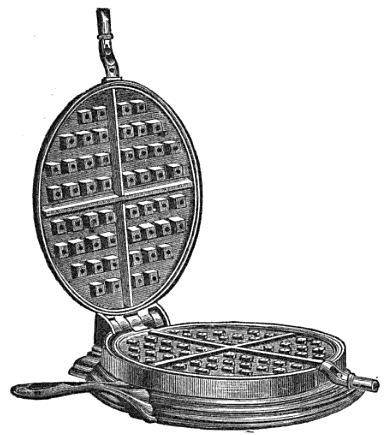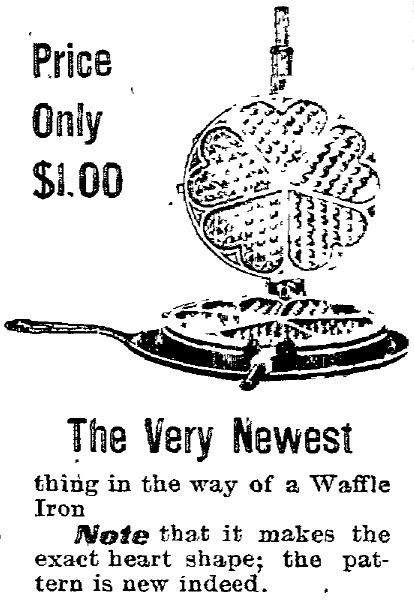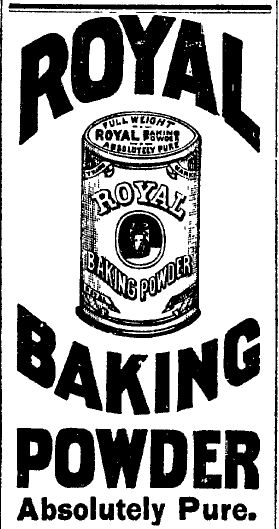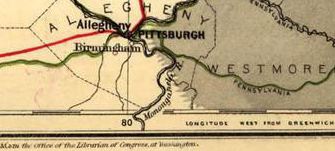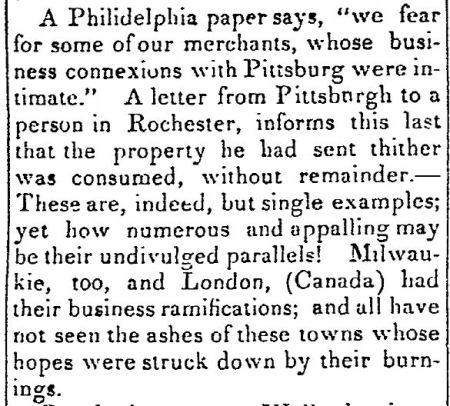
ONE GREAT TRUST
Which Will Be Controlled by the People Is the End
To Which Our Business Interests Must Come, Says Herbert N. Casson — An Interesting Lecture.
The few people who gathered at the Odd Fellow’s hall last evening to listen to the social problems discussed from socialistic point of view by Herbert N. Casson were well paid for their time and trouble. Mr. Casson comes from the “Ruskin Colony” in Tennessee, a colony which is run upon the co-operative plan and in which every man earns his own living. His theories are there put into practice and he believes it to be the model way of living.
As a lecturer he is a success. Logical, terse and epigramatic, his words carry force with them. He kept his audience almost spellbound for nearly two hours, while he expounded his teachings. He prefaced his remarks by saying that thought along was mighty. The man who thinks is a power; he who does not is a machine. He said in part:
“America is at one the wonder and disappointment of the world; the wonder, in that in the short space of 120 years it has achieved a richness of civilization whose enjoyments are limitless; a disappointment, in that these same enjoyments are already captured by a few.
“The influences of Europe are already being felt and the abuses which our forefathers left behind when they started in the Mayflower have followed in a Cunarder. America was once the laborer’s paradise; it is now a Paradise Lost, but let us hope, under a different system, it shall be Paradise Regained.
Greenland, with its frozen, almost untillable land, is without a pauper and almost without a criminal. The lazy, indolent inhabitant of the South Sea islands never works and is never hungry. But we, who occupy the grand middle position, with labor-saving machinery and all the civilization, cannot feed our poor and have hundreds who are suffering for want of protection against the cold blasts of winter tonight. In the preparations for civilization labor and capital were on a proper basis; now capital is in the ascendancy and labor suffers.
“It was labor who said ‘let there be cities; let there be railroads; let there be telegraphs;’ and these comforts sprang into existence. But in their enjoyment labor has no share. The relation between production and distribution is inequitable. What ails us is that we have no proper conception as to what should be owned in private and what should be owned by the public. Everything that belongs to the individual comfort should be owned by the individual. What is of public use and for the enjoyment of all, such as railroads, telegraphs and lighting plants, should be owned by the public.
“It is not a fight between the rich and the poor, for the capitalists are as dissatisfied as the laborer. It is a contest to do away with classes altogether and to get into the natural conditions of life. What appears to be our greatest sign of danger is in reality our greatest sign of hope. The trust is the only professional way of doing business; all else is amateur. And the trusts will continue until there is a trust of trusts, when the public will step in and take possession, legally and without force.”
He claimed as a maxim that whatever people got together they owned together. His remarks were illustrated by events of every-day life, which made his remarks exceedingly interesting.
After the lecture, Mr. Casson gave the following information concerning the Ruskin colony, which is located in Tennessee, 57 miles west of Nashville, six miles from any railroad. There are 300 members of the colony and they have 1,800 acres of land. They have no officers, no public officials, have no use for law, issue their own money, have no church, have farms, some factories, and raise all they have to eat and only pay money for clothing and utensils needed. In conclusion Mr. Casson said they published a paper called the Coming Nation, for which he solicited subscriptions.
Sandusky Star, The (Sandusky, Ohio) Feb 14, 1899

Wedded By Compact.
What is spoken of as one of the most remarkable weddings that has ever taken place within the United States was “compacted by mutual agreement” in the little town of Ruskin, Tenn., on a recent Sunday afternoon. Its announcement is of local interest, inasmuch as the groom has spoken here several times. He is Rev. Herbert N. Casson, formerly of Boston, and the founder and pastor of the Lynn labor church. He is now a member of the Ruskin colony, and is editor of its paper, the Coming Nation.
There was no church or religious formula used for the marriage, but in the presence of witnesses bride and groom entered into a mutual compact, each agreeing to the marriage. The mode of “wedding by compact” is in accord with the principles of the socialist co-operative town of Ruskin, and in this case is referred to as probably unprecedented in singularity.
North Adams Transcript (North Adams, Massachusetts) Mar 15, 1899

RUSKIN COLONY OF SOCIALISTS COLLAPSES.
Sale Takes Place in Tennessee Cave — Many of the Women Shed Tears Over the Failure.
Tennessee City, Tenn., July 28.
The Ruskin Co-operative Colony property was sold yesterday in a big cave near here.
Several hundred people were seated in the cave, including the colonists and their wives and children and farmers from the surrounding country. W. Blake Leech represented the Receiver.
Four tracts of land, containing a total of 784 acres, were first sold to Leech for $11,000. Another tract of a thousand acres, mostly worthless land, went to George Wright for $1,450. He also bought the storehouse and lot for $15, making the whole amount received for land and about thirty houses thereon $12,465.
The land originally cost several thousands more. Growing crops go with the land.
The minority stockholders, who had the property thrown into the hands of a Receiver, were the purchasers. Horses, mules, fine hogs, etc., went for a song, mostly to neighboring farmers.
It is said that the purchasers, will reorganize the colony on a somewhat different basis. Fifty-five majority stockholders already have an agent out looking for a new location. They may go to Virginia.
Today the colony paper, the Coming Nation, will be sold. Its circulation of 60,000 has dwindled to 11,000.
Many of the women shed tears at the sale, and there is much feeling over the breaking up of the new Utopia.
History of the Experiment.
The Ruskin Co-operative Association in Yellow Creek Valley, about fifty miles northwest of Nashville, Tenn., was founded for the purpose of working to a practical conclusion the theories of absolute Socialism — the theories of Fournier and Bellamy.
The concern owned at first 1,509 acres of excellent land, and conducted a number of manufacturing and commercial enterprises.
It was said at the beginning of the colony’s work that if, with everything in its favor, this enterprise failed, then it might be set down as demonstrated that Socialism by sections — independent of national Socialism — is a failure.
With the exception of the metals the Ruskin Colonists had in abundance the raw material for the manufacture of almost everything necessary to the physical comfort of man, together with the skill, the industry, and intelligence to put it to use.
In the community were men skilled in agriculture and horticulture, machinists, engineers, brick-workers, shoemakers, tanners, printers, bookbinders and authors.
The Bee (Earlington, Ky.) Aug 3, 1899

PROPERTY SOLD,
and the Ruskin Co-Operative Company is Now a Memory.
NASHVILLE, Tenn., July 29.
The property of the Ruskin Co Operative colony, situated at Ruskin, Tenn., 50 miles northwest of here, has been sold by a receiver. The land, 1,700 acres, and buildings brought $12,000.
This means the failure and end of the Ruskin colony, founded by J.A. Wayland in 1895, and which has been looked on both in this country and Europe as the most successful experiment in socialism ever inaugurated. The colony was prosperous, revenues far exceeding expenses, but became disorganized by a faction favoring free love, contending it was sound socialism.
Fort Wayne News (Fort Wayne, Indiana) Jul 29, 1899

J.K. Calkins, editor of The Coming Nation, a socialist paper published by the Ruskin Commonwealth, at Ruskin, Ga., is in the city. The Coming Nation is doubtless the only family socialist paper published in the world. Although Ruskin is a very small community, having only 217 members, the paper has the remarkable circulation of 17,000 copies and its subscribers are in all parts of the world.
“Our success has been something remarkable: said Editor Calkins yesterday. “We have one of the best equipped publishing concerns in the country. Our press is a perfecting machine of late pattern that cost $5,500, and we get out a sheet that is, we think, very creditable from a typographical and literary standpoint.
“The Ruskin colony is now about six years old. Since moving to Georgia, our career has been most successful. We experienced some trouble in Tennessee on account of some members who wanted to ‘rule or ruin’ and who came near accomplishing the latter. This troublesome element has been weeded out and we are now in a very prosperous condition.”
The Atlanta Constitution (Atlanta, Georgia) Apr 11, 1900

THOMAS HICKLING
Vice President of the Ruskin Community
VISITS HIS OLD HOME
In Sandusky and Talks Entertainingly of the Socialist Colony in Southern Georgia
Thomas Hickling, who moved his family to the Ruskin Commonwealth in Southern Georgia a few months ago is visiting in the city and expects to remain until the latter part of next week. He hopes to dispose of his property on Prospect street and will make his home permanently in the South which he says has a great future.
In Sandusky, Mr. Hickling was grown as a Socialist leader and the community in which his family now make their home is conducted on the co operative plan. A charge of $500 is made for each family that enters and the profits of the various enterprises engaged in by the members are shared in common, although each family is assigned its own house and the members may take their meals in private or in a great common dining room as they may choose.
The Ruskin colonists own 800 acres of valuable land, much of it being covered with timber. They engage in the manufacture of shingles, brooms, suspenders, cereal substitutes for coffee and other articles, although many of the men are necessarily employed in agricultural pursuits. Mr. Hickling says that when he went to Ruskin there were 200 or more members of the colony. Now there are not quite 100. The colonists have been able to make good livings but their number has been decimated because history has repeated itself and the members of this co operative colony have been unable to agree as to the details of the management. Upon some things however they are thoroughly agreed and one of the rules is that nine hour shall constitute a days work for a man.
Mr. Hickling has become one of the leaders in the colony and has been made vice president of the organization. He admits that the management of the Ruskin colony has not been exactly ideal but says that a re-organization will doubtless be effected in the near future. Mr. Hickling stoutly maintains that the communal idea is a good thing but thinks that the people are not far enough advanced in thought and education to live in that way at present. There is some talk of dividing up the colony so that the members will individually own certain portions of the real estate but maintaining a sort of an organization whereby they will still work together for mutual benefit instead of in competition with one another.
The Ruskin colony has three schools in one of which Miss Grace Hickling a Sandusky High school graduate of 98 has been one of the teachers. A.D. Hickling a young man who went to Ruskin with his parents is no longer in the colony but is learning the machinists trade in the Air Line railroad shops at Waycross, Ga.
The Ruskin colonists have no churches of their own but there lain surrounds a Baptist and Methodist church so that they have ample opportunity to attend divine worship regularly.
Sandusky Daily Star (Sandusky, Ohio) Apr 17, 1901

SOCIALISTS MAKE FAILURE
Property of Ruskin Commonwealth To Be Sold by Sheriff.
FAMILIES LEAVING DAILY
They Settled Near Waycross About Two Years Ago — Their Dreams of Happiness Unfulfilled
Waycross, Ga., August 18. — (Special)
The Ruskin commonwealth of socialists, 7 miles west of Waycross, has about gone by the board. Only three or four families now remain, the others having departed for different points north and west. The printing outfit is advertised to be sold by the sheriff on August 31, while the land will go the same way on September 3. This will wipe out the last vestige of the colony which came here from Tennessee two years ago next month. Several families have located near Valdosta, where they have hopes of making a permanent settlement. The printing outfit will be sold to satisfy labor and other claims, while the land goes to satisfy a mortgage.
The Atlanta Constitution (Atlanta, Georgia) Aug 19, 1901

Ruskin Cooperative - Strawberry Pickers (Image from Wiki)
PRINTING OUTFIT WAS SOLD.
Property of Socialists Disposed of by the Sheriff.
Valdosta, Ga., September 1 — (Special)
The printing outfit of The Coming Nation, the defunct socialistic paper, recently printed at Ruskin colony, in Ware county, was sold at sheriff sale yesterday and was bought in by the creditors of the concern. There were mortgages aggregating $1,600 or $1,800 against the plant, among the heaviest creditors being the A.S. Pendleton Company, of this city, and M. Ferst & Co., of Savannah. The Coming Nation was a leading organ of the socialists and at one time had nearly 40,000 subscribers, scattered in every quarter of the globe. The outfit which the paper owned is a large and modern one, embracing a Campbell perfecting press, stereotyping outfit, etc.
The Atlanta Constitution (Atlanta, Georgia) Sep 2, 1901

John Ruskin
You can read a biography of John Ruskin at VisWiki.com. LINK
*****
Most of the images in this post are from this insightful book (linked below) written by a member of the failed Ruskin Cooperative. The publisher, an avowed socialist, wrote the preface, which includes the typical “Yes, socialism failed here, but only because it wasn’t implemented correctly,” blather. The failure is never caused by “socialism,” itself, but by the “incompetent” people trying to prove its awesomeness. Unfortunately , it is still being pushed on us today, and worse, it is being forced on the whole country, not just a little commune in a cave.
Title: The Last Days of the Ruskin Co-operative Association
Standard socialist series
Author: Isaac Broome
Publisher: C. H. Kerr & company, 1902

